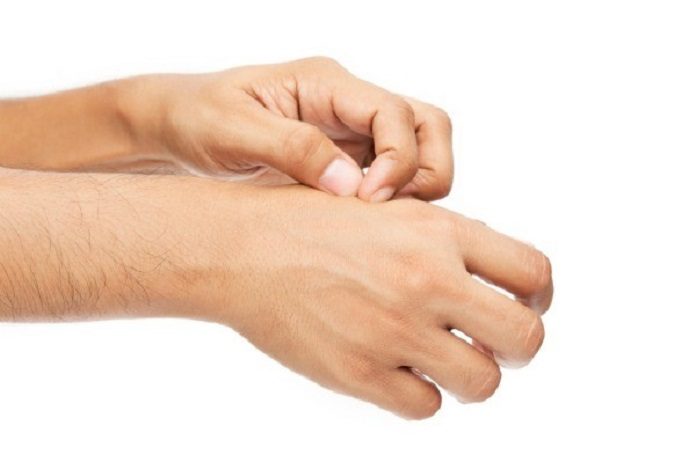Itchy skin, also known as pruritus, is an irritating and uncontrollable sensation that makes you want to scratch to relieve the feeling. The condition affects up to 25 percent of the population during the course of their lives.
Besides being a serious condition, people often underestimate and ignore the symptom. Now, scientists in Germany have now joined forces to form the first research unit in Germany to carry out research on the subject of chronic itching as part of a translational project called PRUSEARCH.
The condition of chronic itching sometimes affects people’s quality of life. It occurs not only with dermatological conditions such as psoriasis or eczema but also with conditions that affect the liver and the gallbladder, kidney failure, diabetes, and cancer, after cancer treatment and in psychiatric and neurological conditions. Older people are more frequently affected by chronic itching. However, targeted treatments are still not available.
Dr. Andreas Kremer from the Department of Medicine 1 – Gastroenterology, Pneumology, and Endocrinology at Universitätsklinikum Erlangen said, “The research unit’s main aim, therefore, is to identify mediators of chronic itching in patients, characterize structural and functional changes in nociceptors (free sensory nerve endings) in chronic pruritus and define possible mechanisms of neuronal sensitization.”
Scientists are investigating cholestatic pruritus, which is caused by diseases of the liver and gallbladder. Whether it’s an inflamed biliary tract, hepatitis C, liver cirrhosis or a liver tumor – chronic pruritus can occur with all conditions that affect the liver or the biliary tract.
Andreas Kreme explained, “Chronic pruritus is often a symptom of cholestatic conditions when the secretion of bile acids is disrupted. Cholestatic pruritus is especially uncomfortable and scratching offers no relief. Patients report that it is most serious especially in the nighttimes and amid the early long periods of the night. It happens on patients’ furthest points specifically, yet can likewise happen on the whole body.”
Scientists have identified one trigger for itching – lysophosphatidic acid or LPA. This small lipid is an interim result of intercellular fat digestion and it has been known for quite a while that LPA impacts muscle cells and platelets, blood pressure and aggravation forms and also the advancement and spread of tumors, among others.
Kremer said, “We are currently investigating exactly how LPA works on the molecular level and how the lipid activates neuronal and non-neuronal cells in translational studies – that is, from in-vitro research to research in humans.”
Scientists are observing the impact of LPA utilizing psychophysics. This includes infusing the substance specified in the skin of test subjects and requesting them to evaluate what they feel, for example, itching, but also a pain. Besides, the scientists are planning to utilize microneurography to examine which sub-classes of somatosensory nerve strands are initiated by LPA.
PD Dr. Barbara Namer, who is also part of the research team said, “To do so, we puncture the peroneal nerve with a very thin metal microelectrode and insert the second electrode into the skin. Such electrodes enable us to tap the impulses of individual nerve fibers like a telephone wire and ‘listen in’ and stimulate single nerve fibers using electricity.”
Dr. Kremer said, “To test the characteristics of these nerve fibers, various stimuli are applied to the back of the foot in addition to LPA such as pressure, heat, cold or histamine. We hope to not only improve our understanding of LPA, but also to identify further mediators for itching in future. This is the basis for a new medication to treat the cause of the itching.”
